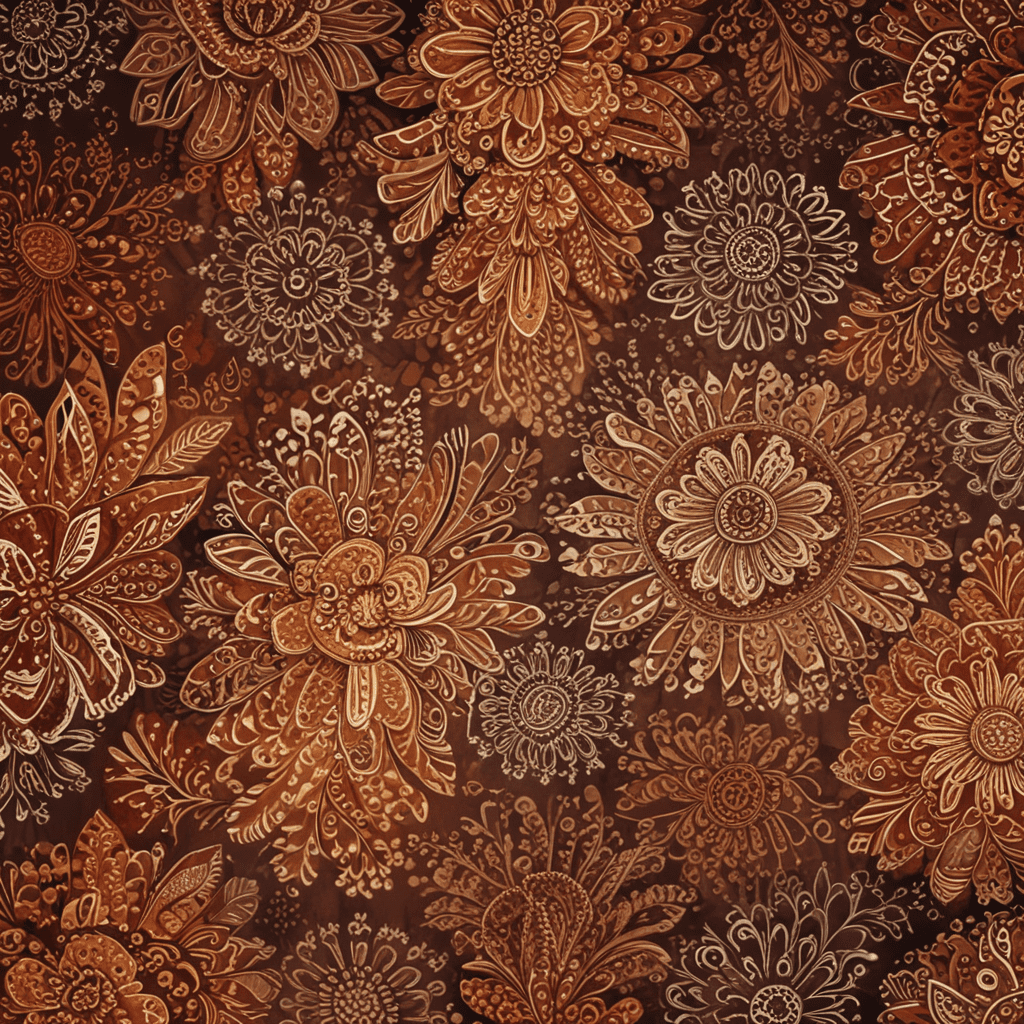
Introduction to Batik Printing in Bangladesh
Batik printing is a traditional handicraft technique that involves the application of wax to fabric, followed by dyeing and removal of the wax to reveal intricate designs. Originating from Indonesia, batik printing has found a vibrant home in Bangladesh, where it has developed distinct characteristics and cultural significance. Today, batik printing continues to thrive in Bangladesh as a cherished art form, embodying the country's rich artistic heritage.
History and Cultural Significance
The history of batik printing in Bangladesh can be traced back to the 17th century. It is believed that the technique was brought to the country by Indonesian traders and craftsmen. Over time, batik printing became deeply intertwined with the local culture and became an integral part of traditional festivals and celebrations. Batik fabrics are often used for making garments, saris, and home decor items, showcasing intricate designs that reflect Bangladeshi motifs, patterns, and cultural themes.
Types of Batik Techniques
In Bangladesh, there are several distinct batik techniques practiced. One popular technique is the "block printing" method, where pre-carved wooden blocks are used to apply the wax onto the fabric. Another method, known as "freehand painting," involves the use of a stylus called a "canting" to create wax designs directly on the fabric. Each technique produces unique patterns and effects, contributing to the diverse range of batik products found in Bangladesh.
Traditional and Modern Designs
Batik printing in Bangladesh draws inspiration from both traditional and modern design aesthetics. Traditional designs often incorporate motifs such as flowers, leaves, paisleys, and geometric patterns, which are rooted in the country's cultural heritage. In recent years, contemporary designers have introduced innovative motifs, color palettes, and patterns, blending traditional techniques with modern artistic expressions. This fusion of old and new has resulted in a dynamic and evolving batik industry in Bangladesh.
Materials and Equipment
The essential materials for batik printing include fabric (usually cotton or silk), wax, dyes, and tools for applying the wax and dyes. In Bangladesh, natural dyes derived from plants and minerals are often used, such as indigo, turmeric, and madder root. Traditional wax-resist batik is created by applying melted beeswax to the fabric using a specialized tool called a "canting" or a brush. Modern batik artists may use other wax-resist materials as well, including paraffin wax or acrylic emulsions, to achieve different effects.
Process of Batik Creation
The process of creating a batik fabric is a time-consuming and intricate one. The first step is to prepare the fabric, which involves washing and ironing it. The artist then applies the wax design onto the fabric using the chosen batik technique. Once the wax design is complete, the fabric is dyed in one or more colors. The dye will penetrate the areas not covered by wax, creating the desired pattern. After dyeing, the wax is removed using hot water or solvents, revealing the intricate patterns and colors.
Role of Artisans and Craftspeople
Artisans and craftspeople play a crucial role in preserving and promoting the art of batik printing in Bangladesh. These skilled individuals are the custodians of traditional techniques and designs, passing down their knowledge and expertise from generation to generation. Their dedication and passion ensure the continuity of this vibrant art form.
Contemporary Applications of Batik
While batik printing remains rooted in traditional designs and techniques, contemporary artists and designers are pushing the boundaries of this art form. Batik is no longer confined to textiles but is being incorporated into various art forms, such as painting, sculpture, and fashion design. This versatility allows batik to reach new audiences and appeal to wider aesthetics.
Economic and Tourism Significance
Batik printing is an important industry in Bangladesh, providing employment and income for many artisans and craftspeople. It contributes to the country's economy through the sale of batik products, both locally and internationally. Additionally, batik has become a popular tourist attraction, showcasing the rich cultural heritage of Bangladesh and offering visitors a unique opportunity to experience this traditional art form firsthand.
Preservation and Promotion of Batik Art
Recognizing the cultural and economic significance of batik printing, several initiatives are underway to preserve and promote this art form. These efforts include the establishment of training centers, the provision of financial assistance to artisans, and the promotion of batik products through exhibitions, fairs, and online platforms. By supporting the growth and sustainability of the batik industry, Bangladesh can ensure the continuation of this vibrant artistic tradition for generations to come.
FAQ
1. What is the significance of batik printing in Bangladesh?
Batik printing holds great cultural and economic significance in Bangladesh, embodying the country's rich artistic heritage and contributing to its economy through tourism and the creation of employment opportunities.
2. What are the different types of batik techniques practiced in Bangladesh?
Two primary batik techniques are widely practiced in Bangladesh: block printing, using carved wooden blocks to apply wax designs, and freehand painting, where a stylus called a "canting" is used to create intricate patterns directly onto the fabric.
3. How is the process of batik creation carried out?
The batik creation process involves applying wax designs to the fabric, dyeing it one or more colors, and then removing the wax to reveal the patterns and colors.
4. What is the role of artisans and craftspeople in preserving batik art in Bangladesh?
Artisans and craftspeople are the custodians of traditional batik techniques and designs, passing down their knowledge and expertise through generations. Their dedication is vital for the preservation and continuity of this vibrant art form.
5. How is batik being used in contemporary applications?
Contemporary artists and designers are exploring new ways to incorporate batik into various art forms, such as painting, sculpture, and fashion design, expanding its reach and appeal to wider audiences.


